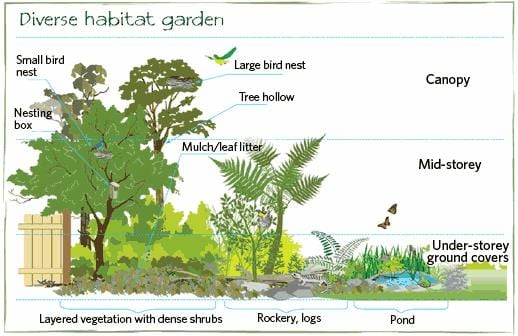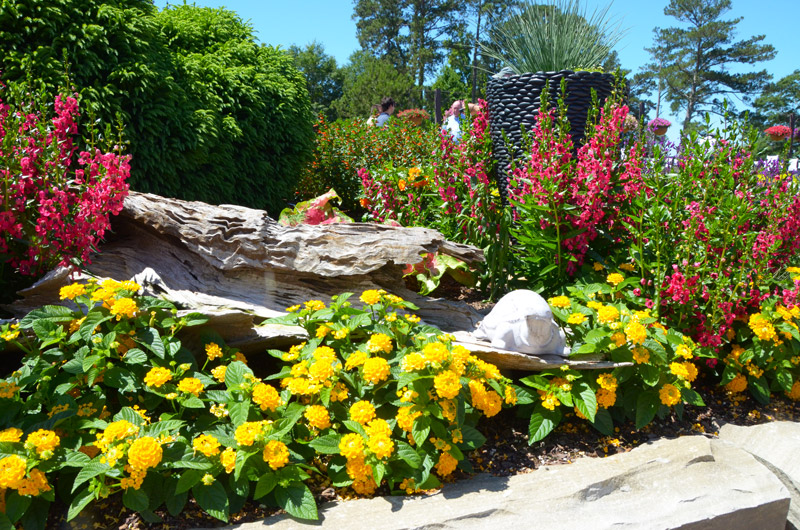Fascination About Hilton Head Landscapes
Fascination About Hilton Head Landscapes
Blog Article
The smart Trick of Hilton Head Landscapes That Nobody is Discussing
Table of ContentsExcitement About Hilton Head LandscapesHilton Head Landscapes - An OverviewExcitement About Hilton Head LandscapesSome Ideas on Hilton Head Landscapes You Should KnowFascination About Hilton Head LandscapesNot known Facts About Hilton Head LandscapesThe Buzz on Hilton Head Landscapes
Line creates all forms and patterns and can be utilized in a range of methods in the landscape. Line in the landscape is created by the edge in between 2 materials, the synopsis or silhouette of a form, or a long straight function. Lines are an effective device for the designer since they can be made use of to create a limitless variety of forms and forms, and they manage movement of the eye and the body.

Lines can have several qualities, such as those defined below, yet they typically serve different functions. Figure 1. Lines in the landscape - landscapers hilton head island. The properties of lines establish how individuals react to the landscape, both psychologically and literally. Straight lines are structural and strong; they develop a formal personality, are typically related to a symmetrical design, and lead the eye straight to a focal factor.
Hilton Head Landscapes Can Be Fun For Everyone
Straight lines are most commonly found in hardscape sides and material. Curved lines create a casual, all-natural, loosened up personality that is linked a lot more with nature and unbalanced equilibrium. Curved lines move the eye at a slower speed and add enigma to the area by developing concealed views. Vertical lines relocate the eye up, making a room feel larger.
Vertical lines in the landscape consist of tall, narrow plant material, such as trees, or high structures, such as an arbor or a bird residence on a pole. Horizontal lines relocate the eye along the ground plane and can make a space really feel bigger. Reduced lines are more restrained and create a sensation of rest or repose.
Our Hilton Head Landscapes Statements
Low lines are produced by reduced yard wall surfaces, walkways, and brief bushes. Lines are used to draw forms on a plan. In plan view, they specify plant beds and hardscape locations. Lines are likewise developed by the vertical types of developed functions and plant material. There are 3 main line types that produce kind in the landscape: bedlines, hardscape lines, and plant lines.
Bedlines link plant product to your home and hardscape due to the fact that the eye complies with the line, relocating the gaze with the landscape. Hardscape lines are created by the edge of the hardscape, which defines the built structure. Line can likewise be developed by long and slim products, such as a fence or wall surface.
The Single Strategy To Use For Hilton Head Landscapes
Kind is located in both hardscape and plants, and it is commonly the leading visual element that spatially organizes the landscape and often identifies the style of the yard. The kind of structures, plant beds, and garden accessories also determines the total type theme of the yard. Official, geometric types include circles, squares, and polygons.
Plants develop form in the garden with their lays out or silhouettes, but type can also be defined by a void or negative space in between plants - landscaping hilton head sc (https://yoomark.com/content/family-owned-and-operated-hilton-head-landscapes-has-been-serving-beaufort-county-over). Circles can be cycles, or they can be split right into half circles or circle segments and incorporated with lines to develop arcs and tangents
Some Ideas on Hilton Head Landscapes You Need To Know
Circles can also be stretched right into ovals and ellipses for more range and interest. Circles are a solid style kind due to the fact that the eye is constantly drawn to the facility, which can be utilized to emphasize a prime focus or attach other kinds. Number 2. Circular types in hardscape and yard panels.
The square type can additionally be fractional and previously owned repeatedly to produce a grid pattern. Unlike circles, squares are more powerful on the sides, which can be lined up or overlapped to create distinct patterns and more complex kinds.
Meandering lines commonly resemble the all-natural course of rivers or streams and can be referred to as smooth lines with deeply bent wavinesses. Twisting lines (Figure 3) work well for pathways, plant bedlines, and completely dry stream beds. Twisting lines can add rate of interest and secret to a yard by leading visitors around edges to discover brand-new views and areas.
Hilton Head Landscapes - Truths

Typical plant types are well established and standard, as kind is moved here the most constant and identifiable characteristic of plants. Kind can likewise be developed with the massing of plants, where the overall mass produces a different kind than a specific plant.
An extremely different form should be made use of with careone or 2 job well as a prime focus, but way too many wreak havoc. All-natural plant forms, instead of over-trimmed kinds, must establish the bulk of the make-up. The significance of general kind is basically dependent on the viewing perspectivethe kind of a tree can appear fairly different to a person standing under the canopy versus checking out the tree from a distance in an open field.
9 Easy Facts About Hilton Head Landscapes Shown
Plant forms additionally develop and define deep space or open rooms in between the plants, developing either convex or concave forms in the spaces. High-arching tree branches generally produce a concave open room under the branches, and a round cover with low branches fills the room to develop a convex kind outdoors area under the tree.

Report this page